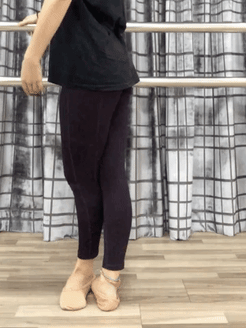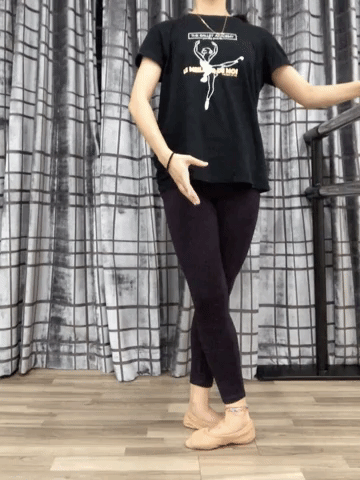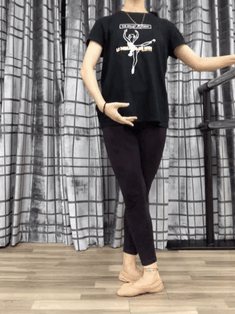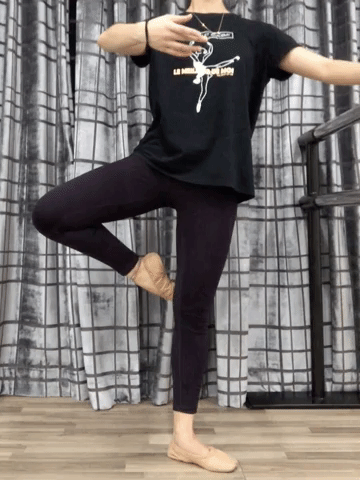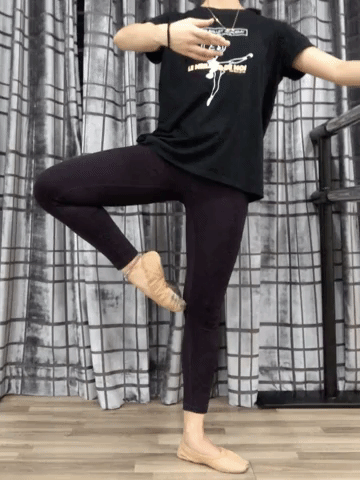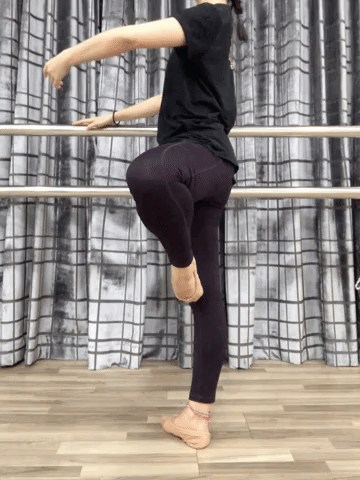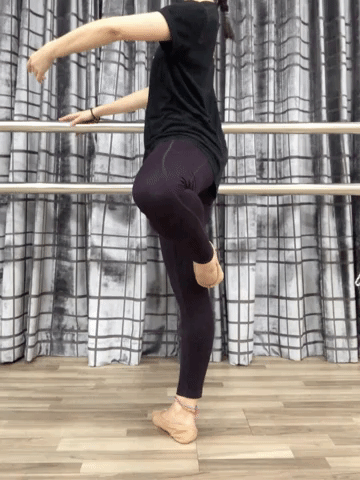This blog post will be all about the passé and retiré, and our technique tips and tricks to mastering these quintessential ballet steps. Let's get back to basics!
Passé: “to pass”
The movement of the leg passing through the retiré position.
Retiré
The actual position of the dancer in which the working leg is bent with the foot pointed to the front, side or back of the knee of the supporting leg.

Passé and retiré are two iconic ballet steps and positions that anyone (dancer or not) will instantly recognize. Passé is a building block for développés, an important step in adage exercises. Retiré is the position in which dancers hold for pirouettes and oftentimes, jumps. Mastering these two techniques will help you further your training to increase extension (height of your working leg in développés) and improve pirouettes (more turns).
Technically and linguistically speaking, passé refers to the action of the leg passing through the retiré position, whereas retiré refers to the actual position itself. Oftentimes, dancers and teachers use the two terms interchangeably. For example, if a teacher says “passé balance” at barre, they probably are asking you to balance and hold the retiré position. Both terms are accepted and understood to basically mean the same thing. However, if you are confused in class, be sure to ask the teacher what exactly they mean when they say passé or retiré.
Let’s break down how to do the perfect passé.
There are 4 main components of passé:
1. Peel the working foot off the floor from a closed position (usually third or fifth position) through the demi-pointe to a fully pointed cou-de-pied devant.
2. Draw the working foot up the front of the supporting leg to reach the knee – retiré devant.
3. Continue the move the working foot up and over the kneecap, passing through retire de cote to get to retiré derrière.
4. Draw the foot down the back of the supporting leg to get to cou-de-pied derrière.
5. Place the foot on the floor through the demi-pointe and return back to the closed position.
6. Repeat in reverse.
Passé can close to the front or to the back, or change front and back.
Retiré can be held at the front of the knee (retiré devant), behind the knee at the back of the leg (retiré derrière), or side of the knee (retiré de côté).
Here are (just) a few things to remember when practicing your passé and retiré:
Peel the foot off the floor through demi-pointe before reaching cou-de-pied.
Keep the toes relaxed on the floor and push through the instep of the foot to articulate the toes. Do not crunch the toes. It is essential to go through this demi-pointe before fully stretching the foot in a pointe at the cou-de-pied position. Feel the articulation of all the muscles and bones in the feet by pushing the foot against the floor. This action is very important to build up strength in the feet for more advanced steps, such as fondu, pirouettes and jumps.
Get the working knee open to the side right away.
It should go without saying that your turn out muscles should be activated even before you draw your leg up just from standing in position. Keep those muscles working so that when you peel off your foot to demi-pointe, the knee is still kept facing to the side. Your passé should not turn out only when you reach cou-de-pied and above. It is essential that you are turned out from the very beginning in order to get the correct posture in passé with flat hips in the front and back.
Remember your standing or supporting leg.
While you must focus on the working leg, you cannot forget about your standing or supporting leg! Lift up in the supporting leg right as your foot peels up to demi-pointe. This will help ensure that your hips stay flat and turned out and allow you to reach the highest retiré position possible. Continue to lift up throughout the entire supporting side as well – from your leg and hip, all the way up through the obliques (sides of the torso) to the shoulders. This will also prevent the rib cage from disconnecting and shifting over to compensate for your leg being so high up.
Aim for the highest retiré position possible, with the foot almost above the knee.
As a general rule, the thigh of the retiré leg should be at a 90 degree angle. This means, the retiré foot should be pointed at or above the knee. These days, most professionals and advanced students have a very high leg in retiré. Having a high retiré especially helps with pirouettes, as a high retiré will engage the correct muscles in order to secure a powerful position for many turns.
Here are some feet exercises you can do to help improve your passé and retiré:
Side-Lying Clamshells:

This exercise is excellent for improving turn out as it works on your hip flexors. Greater hip rotation and turn out is important for passé and retiré in order to get flat hips and the knee pointing to the side.
Side-Lying Passé:

Doing ballet on the floor helps to feel your muscles in a different way than standing up. Balancing on your side lying down will help engage your hips and abdominals that you may not feel as much when you are in normal ballet class at the barre!
Standing Retiré Turn In and Turn Out:

This exercise is perfect for working the supporting leg. While you are working on the turn out of the working leg, you will find yourself getting tired on our supporting leg (if you are doing this exercise correctly!). Again, it is easy to forget about the supporting leg and worry only about the working leg. However, the supporting leg is equally as important as this is the leg you are balancing on when in the retire position! Lift up as high as you can in the supporting hip so you can get maximum turn out in the working leg. This exercise will help improve the retiré position, as well as build stability in the supporting leg for adage exercises in the center and overall balance.
Balance Test:
In order to build strength and stability in your retiré position, challenge yourself to balance in that position for as long as you can. To challenge yourself, try balancing with your eyes closed so you really feel your center!
Want to learn ballet as an adult? Check out our Adult Ballet Classes!
Whether you have never done ballet before or have years of experience, we have classes for you. View our Adult Ballet Class Schedule or learn more about our Adult Ballet Classes.

